West Virginia Industrial Home for Girls
Introduction
Text-to-speech Audio
Images
Color postcard of a bird's eye view of the West Virginia Industrial Home for Girls in Salem, WV. The industrial home campus is situated on the hill above the town. Courtesy of Harrison County WV Historical Society
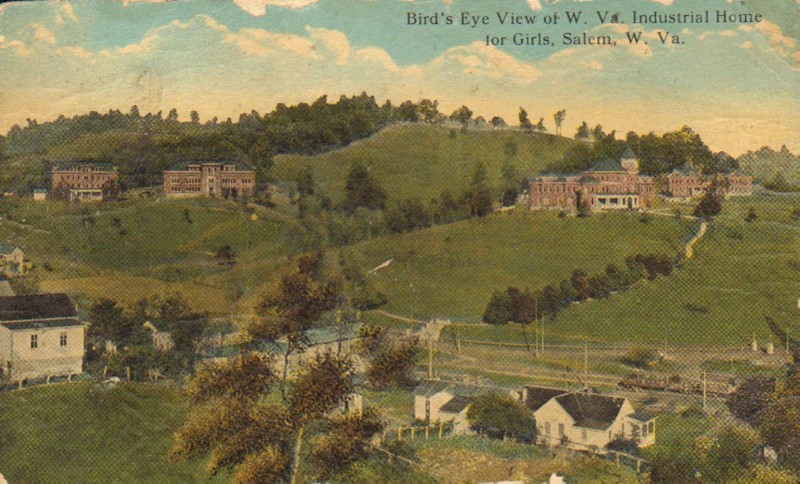
Color postcard of the Jones Cottage at the West Virginia Industrial Home for Girls. The Cottage is Queen Anne in style and was the first building constructed on the campus. The cottage was named in honor of the school's founder, Dr. Harry B Jones
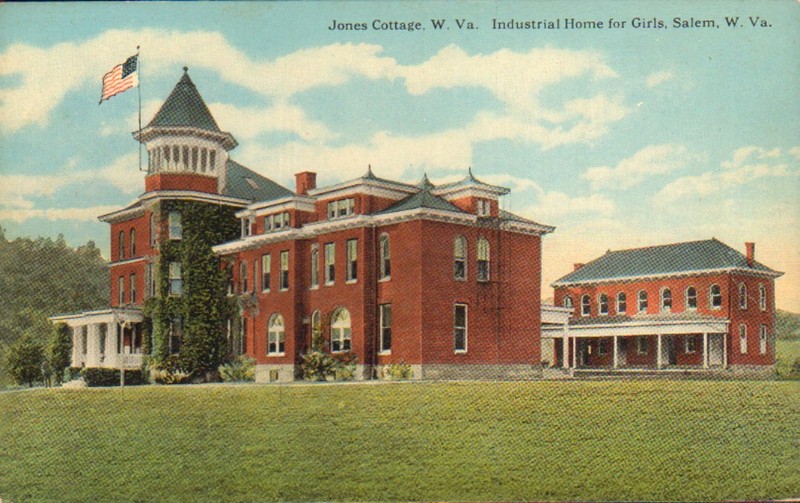
Girls Out for a Walk at West Virginia Industrial Home for Girls, Salem, Harrison County, W. Va. Courtesy of West Virginia & Regional History Center
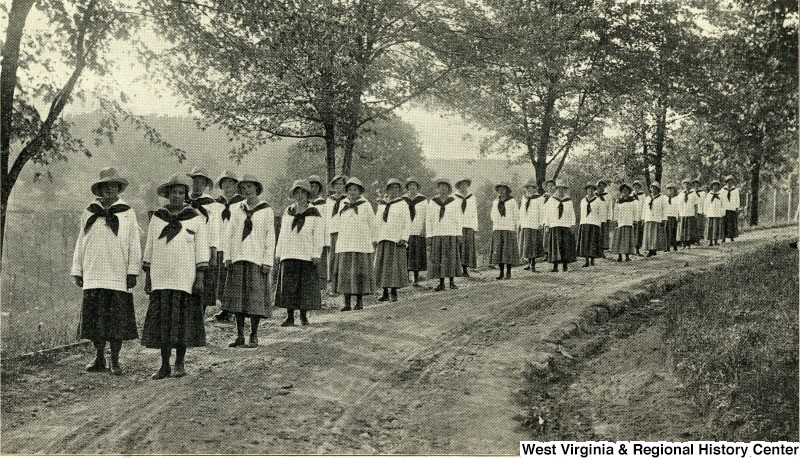
West Virginia Industrial Home for Girls, Salem, Harrison County, W. Va. Courtesy of West Virginia & Regional History Center
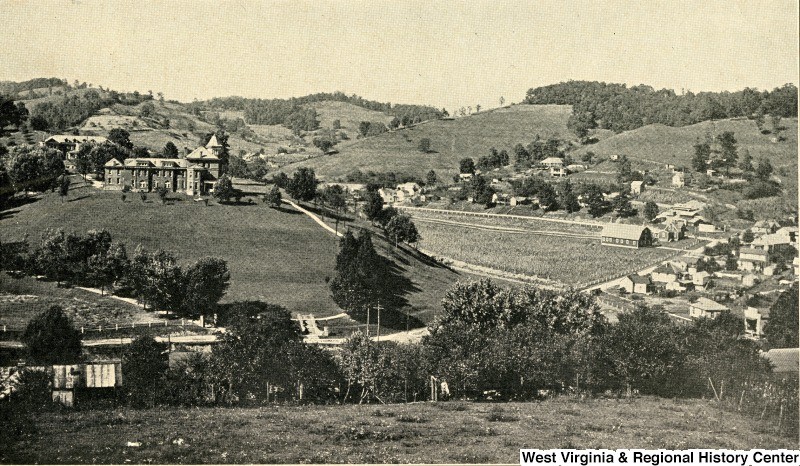
Fire Drill at the West Virginia Industrial Home for Girls in June 1916. Courtesy of West Virginia & Regional History Center
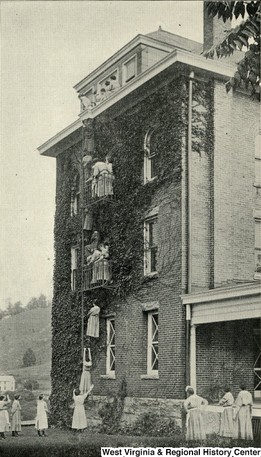
Girls in class at the West Virginia Industrial Home for Girls in September 1912. Courtesy of West Virginia & Regional History Center
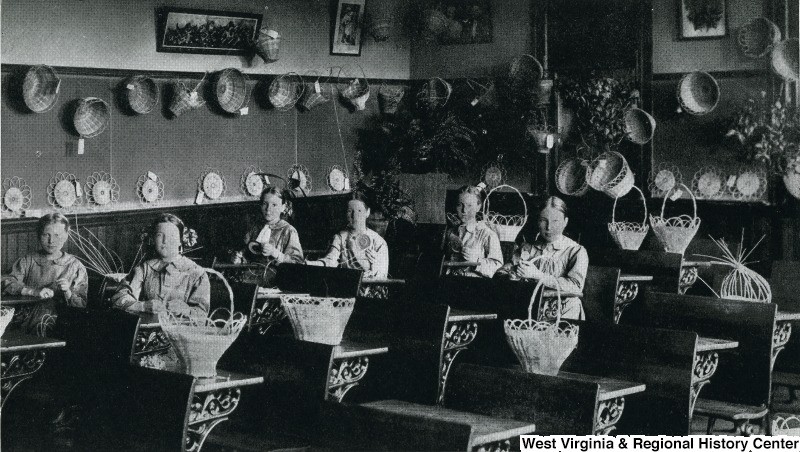
WV historical marker, located on Moore St.
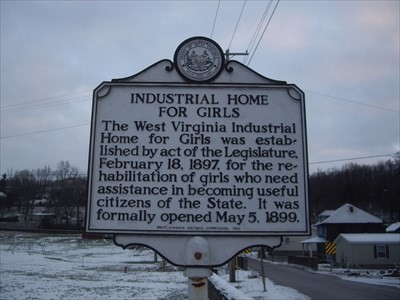
Backstory and Context
Text-to-speech Audio
On February 18, 1897 by an act of the West Virginia Legislature it was established that a state home for girls.
Posters distribute in Harrison County announces that the county had been chosen as the location for the home. A committee Salem citizen began to work to secure the state intuition. They planned to buy 38 acres of the Lowndes farm to deed to the state to in order to sway them to come to Salem. After the state looked at all the locations offered by communities in Harrison County they decided that Salem was the best. However, the owner of the farm would only sell the entire 190-acre farm. The townsmen formed a company and sold stock among themselves to raise $1,730 down payment on the farm.1
The company deed 46 acres of the land to the state and the company divided the rest into plots and sold it off in three sales. The company had inadvertently added to the community what would soon bee he entire third ward of Salem.1
The West Virginia Industrial Home For Girls opened its door on May 5, 1899. Young females were sentenced “between the ages of twelve and eighteen years, who may be committed by justices on the charge of vagrancy, immorality or incorrigibility or by the courts of the state upon conviction of any crime punishable by imprisonment. “2 Males were sentenced to the Industrial Home for Boys in Pruntytown, which had opened in 1891.3
The first build, Jones Cottage, was built for the opening of the Home however, the campus grew. By 1920 the Industrial Home had multiple buildings according to the West Virginia Blue Book.
“The institution is built on the ‘cottage plan,’ there being three cottages and a school building and chapel, with the farmer’s and engineer’s, houses at some distance from the other buildings… in each cottage are matron, housekeeper, and teacher who supervise and teach the girls to cook, bake, wash, iron, sew and general housework. Much attention is given to school work and education, as the great majority of girls received are illiterate and many cannot even read or write.”
According to these same sources, the girls are given a great deal of freedom in the Home and discipline was easy to maintain. If punishment is necessary, it was “usually given by taking away a privilege or a pleasure.”3
After Jones cottage, Silver Hall Cottage was completed in 1914, Sutton Cottage in 1928, Ava Standard Cottage in 1942, and Barron Hall in 1961. The Administration Building also built in 1942, includes offices and visiting rooms on the first floor. Living quarters for the Superintendent, with guest rooms, comprise the second floor.
In 1937 a Lakin High School was created for the Industrial Home. A grade school had been there since the creation of the institute. In 1952 the school changed to Johnson High School for J.T Johnson who willed this estate money to the school. A gymnasium that was financed by the Johnson bequest was finished in 1951.1
According to the 1968 West Virginia Blue book the girls received an education similar to that of their peers throughout the state:
“The girls receive standard and first class high school training in a well-planned school program, with classes offered from second grade through twelfth grade. The high school has been in operation since 1937 and since that time 402 girls have been graduated from high school and 946 have graduated from the eighth grade. Some of the classes offered are foods, clothing, home-making, English, Social Sciences such as civics, American history, geography. West Virginia history, mathematics, sociology, library training, biology, general science, business training, such as first and second year typing, general business, bookkeeping, art, and music. The required subjects are offered for the grade girls. In the school building, there is a well-stocked library, with books on different reading levels, reference books, newspapers, and magazines. A well-equipped practice kitchen, sewing room, typing room, well-lighted and ventilated class rooms, and in each class room there is a wall screen for the showing of educational movies. A gymnasium and an auditorium which is used as the chapel for religious services, school programs, and movies. Each girl belongs to the Harrison County Junior Red Cross and aids in making programs, mats, and other things for the local hospitals. For two years, a well-projected summer program of recreation, remedial reading, arts and crafts, and music has been in effect, with the help of the federal program, for neglected and delinquent children.”4
A change in philosophy regarding youth incarceration, which began in the 1970s, led to population declines at the industrial homes. In 1983, the Industrial School for Boys closed, and the girls’ facility was changed to the Industrial Home for Youth. The boys from Pruntytown were moved to this institution.
In 2000, an $18 million extension was completed at the Industrial Home for Youth, with created separate wings for females, males, and sex offenders. The new building provided for greater security, in-house medical services, and treatment programs. Educational services were provided through the West Virginia Department of Education.
Conditions at the facility drew criticism and the Division of Juvenile Services developed plans to transfer young offenders out of the Industrial Home for Youth. On July 1, 2013 the home made the change from juveniles to adults and became part of the WV Division of Corrections as the Salem Correctional Center.5
Cite This Entry
Admin, Clio, Sydney Stapleton on behalf of Preservation Alliance of West Virginia, and Kathleen Thompson. "West Virginia Industrial Home for Girls ." Clio: Your Guide to History. September 23, 2020. Accessed August 14, 2025. https://theclio.com/entry/45630
Sources
1Davis, Dorothy. Sloan, Elizabeth. Sloan, Elizabeth. History of Harrison County. Clarksburg, WV. American Associations of University Women, 1970.
2Harris, John. West Virgina Blue Book. 1920.
3West Virginia Industrial Home For Youth. e-WV: The West Virginia Encyclopedia. July 22, 2013. Accessed September 12, 2017. https://www.wvencyclopedia.org/articles/1069.
4Myers, J Howard. West Virginia Blue Book 1968. Jarrett Printing Company, 1968.
5Salem Correctional Center. West Virgina Division of Corrections. Accessed September 12, 2017. http://www.wvdoc.com/wvdoc/PrisonsandFacilities/SalemCorrectionalCenter/tabid/198/Default.aspx.
"Industrial Home for Girls." Waymarking.com. Accessed September 23, 2020. https://www.waymarking.com/waymarks/WMGBRJ_Industrial_Home_for_Girls.

